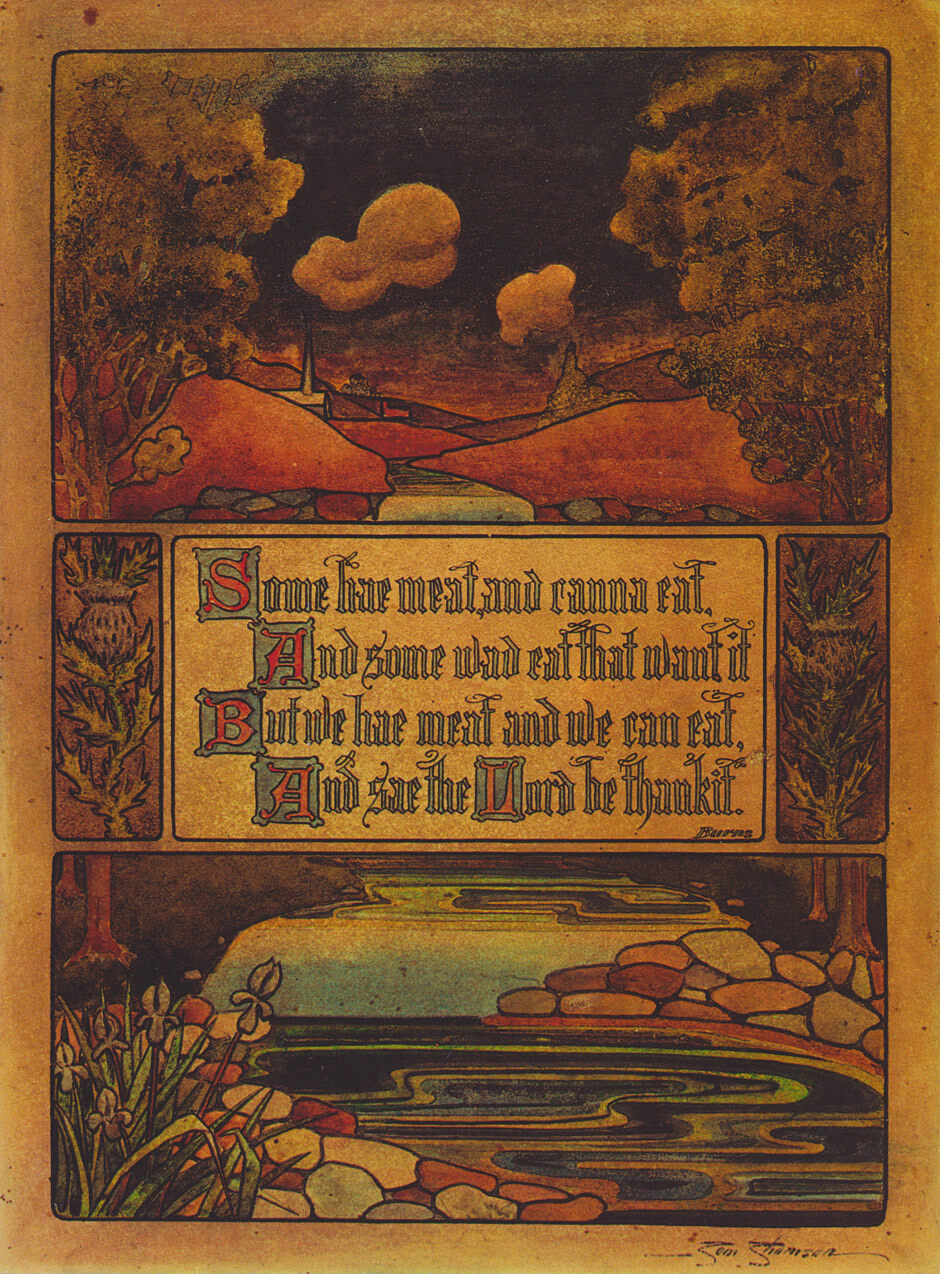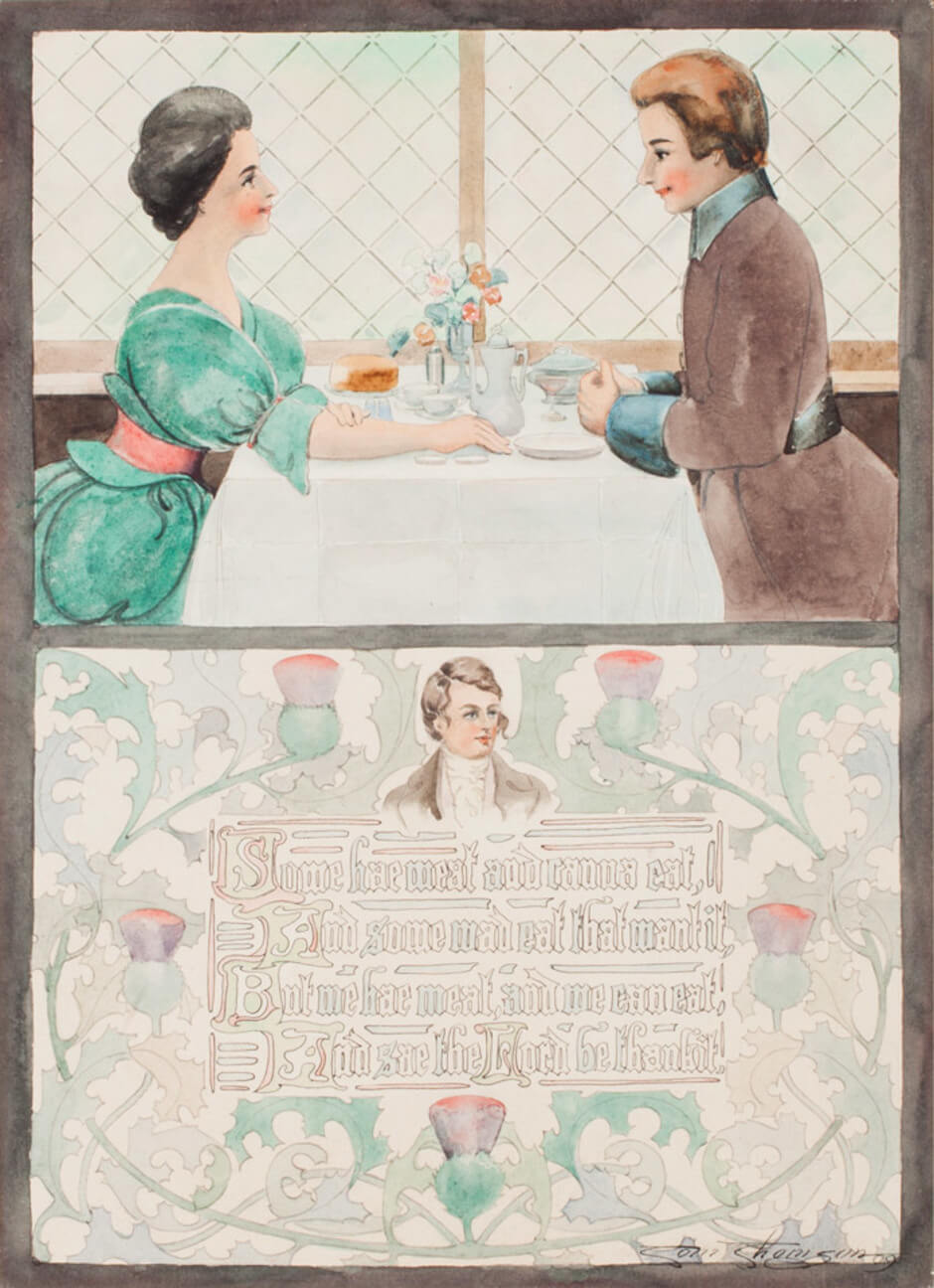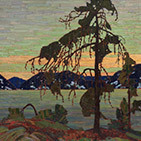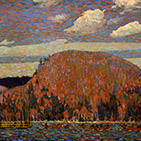Burns’ Blessing 1906

Tom Thomson, Burns’ Blessing, 1906
Watercolour, gouache, and ink on paper, 29.3 x 22 cm
Tom Thomson Art Gallery, Owen Sound, Ontario

As a commercial artist, Tom Thomson was considered a particularly good letterman. Illustrated verses such as Burns’ Blessing show he could make an attractive context for short, sentimental poems. He used this text by Robert Burns at least twice more, in 1907 and 1909. In addition, he illustrated verses by Ella Wheeler Wilcox, Engelbert Humperdinck, Maurice Maeterlinck, Henry van Dyke, and Rudyard Kipling.
Thomson presented Burns’ Blessing to his brother Ralph as a wedding gift, on December 25, 1906. The most promising feature is the stylized landscape illustration that surrounds the verse. The detail in the foliage, rocks, and water in the lower part is skillfully painted, while the two puffy clouds in the upper part foreshadow Thomson’s love affair with skies in all their variety—storms, lightning, rainbows, and sunsets. Although the calligraphy is very fine, the landscape pushes the verse into the background.
A.Y. Jackson (1882–1974) later wrote that in Toronto, there was little distinction between commercial artists and painters: commercial artists painted, and painters worked in the commercial arts to make a living. But so long as Thomson was employed as a commercial designer, his art showed little or no originality. His layouts were conventional; his colours, saccharine. His only ambition seems to have been making pleasant souvenirs. He was a true amateur artist. However, he learned to work quickly and accurately during these years and, along with the conventions of the decorative Art Nouveau style, absorbed important lessons about colour, composition, simplicity, and appeal. Once he found his stride as a painter, both his sketches and his larger canvases were easy to grasp. He became a man transformed—an artist with purpose, ideas, confidence, and enormous talent.

 About the Author
About the Author
 More Online Art Books
More Online Art Books
 Acknowledgements
Acknowledgements